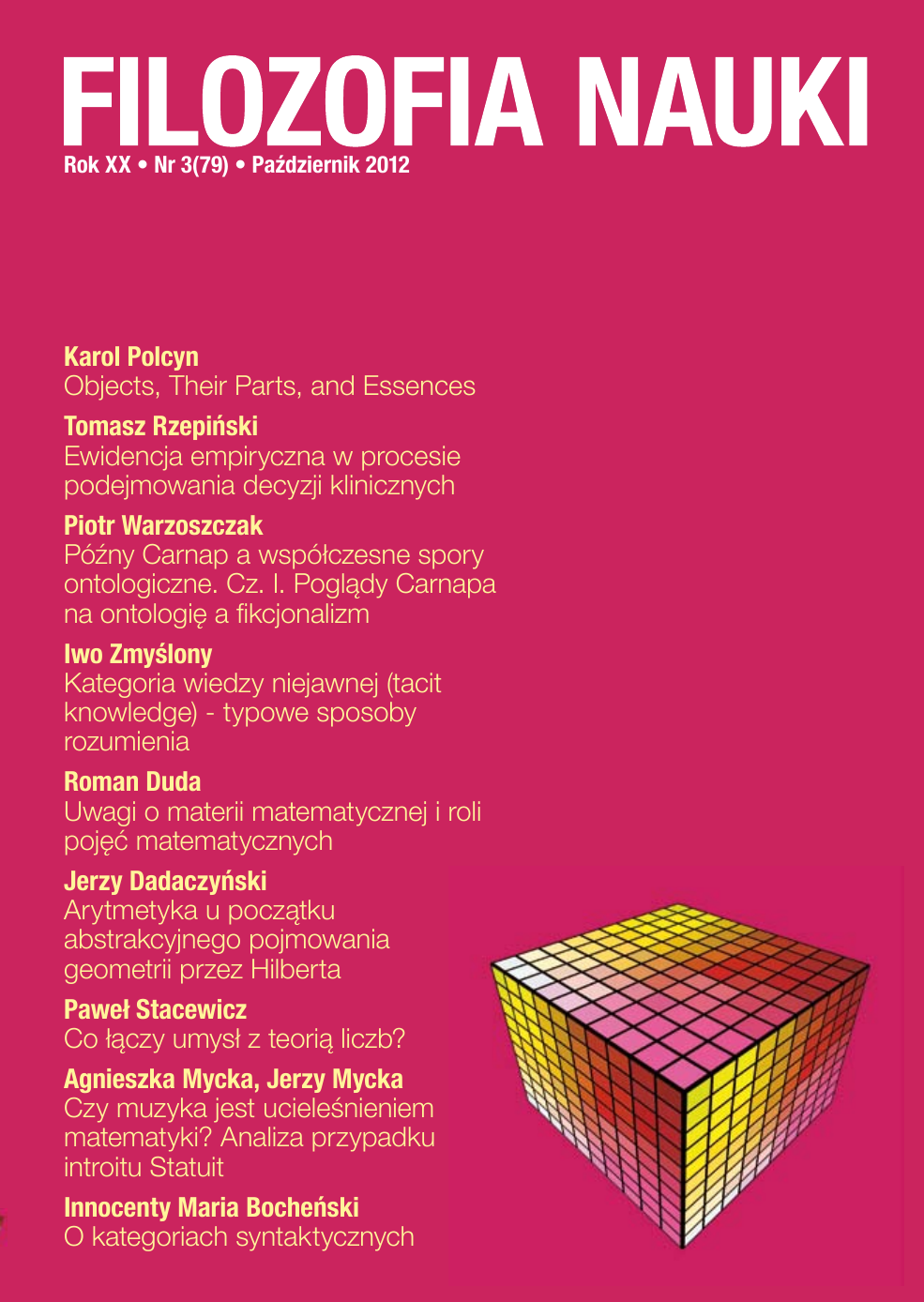Kategoria wiedzy niejawnej (<i>tacit knowledge</i>) – typowe sposoby rozumienia
Słowa kluczowe:
tacit knowledge, somatic tacit knowledge, collective tacit knowledge, embodied knowledge, habitual knowledge, procedural knowledge, non-propositional knowledge, knowledge by acquaintance, know-how, knowing how, skills, epistemic skills, linguistic skills, competence, cognitive scheme, scientific intuitionAbstrakt
How the idea of tacit knowledge is being understood typically? The article reconstructs interpretations in context of three different disciplines: (1) linguistics, (2) cognitive psychology and (3) sociology of knowledge. Furthermore, it proposes (4) definitional criteria for a general notion of tacit knowledge. Abstracts 163 Within philosophical interpretation of N. Chomsky’s generative grammar, the term refers to knowledge of linguistic universals and grammar rules. This knowledge is tacit, since it manifests only through ability to (a) recognize grammar proprieties of expressions in natural language, as well as to (b) generate and understand practically infinite number of them. According to J. Fodor it can be identified with ability to speak (making verbal utterances), hence cannot be substantially distinguished from any other forms of embodied or habitual knowledge. According to alternative interpretation this kind of tacit knowledge (a) has propositional status, (b) is innate and (c) enable all possible grammar forms to be deduced from it.
Within context of cognitive psychology tacit knowledge is understood habitually, i.e. as knowledge that manifest itself only through skilful action and cannot be linguistically verbalised. This idea derives form distinction between declarative and procedural memory, inspired by G. Ryle’s distinction between knowing how and knowing that. Habitual knowledge is (a) completely unaware or almost unaware, (b) cannot be fully made aware nor verbalised, is (c) person-related and (d) contextspecific.
Third way of understanding was proposed by Harry Collins, who has recently (2010) introduced three own types of tacit knowledge — (a) somatic, (b) relational and (c) collective. According to his idea knowledge has basically tacit character, since it circulates „throughout the universe” as physically understood information („pattern”) inscribed on different physical carries („strings”). Relational tacit knowledge can be fully verbalized and implemented in human body or any physical automaton. Somatic tacit knowledge cannot be fully verbalised, since – apart of its quasi-mechanical dimension – it also includes improvisatory (ever-adaptive) aspect of human skills, it can be however transferred to animals (like riding a bike). Collective tacit knowledge cannot be verbalised at all – it is specific exclusively to social dimension of cognitive activities (like driving a car), i.e. cannot be transferred to any sort of animals or automata.
Apart of descriptive reconstruction of listed ideas, the article propose four general criteria to define an idea of tacit knowledge sensu largo. According to author’s stand, the term „tacit knowledge” designates (a) all kinds of non-propositional knowledge or unaware propositional knowledge; (b) all kinds of a priori knowledge; (c) dispositional knowledge (skills; competence); (d) knowledge conceived as information acquired by any organic system through permanent interaction with environment.















 Filozofia Nauki | ISSN 1230-6894 | e-ISSN 2657-5868
Filozofia Nauki | ISSN 1230-6894 | e-ISSN 2657-5868